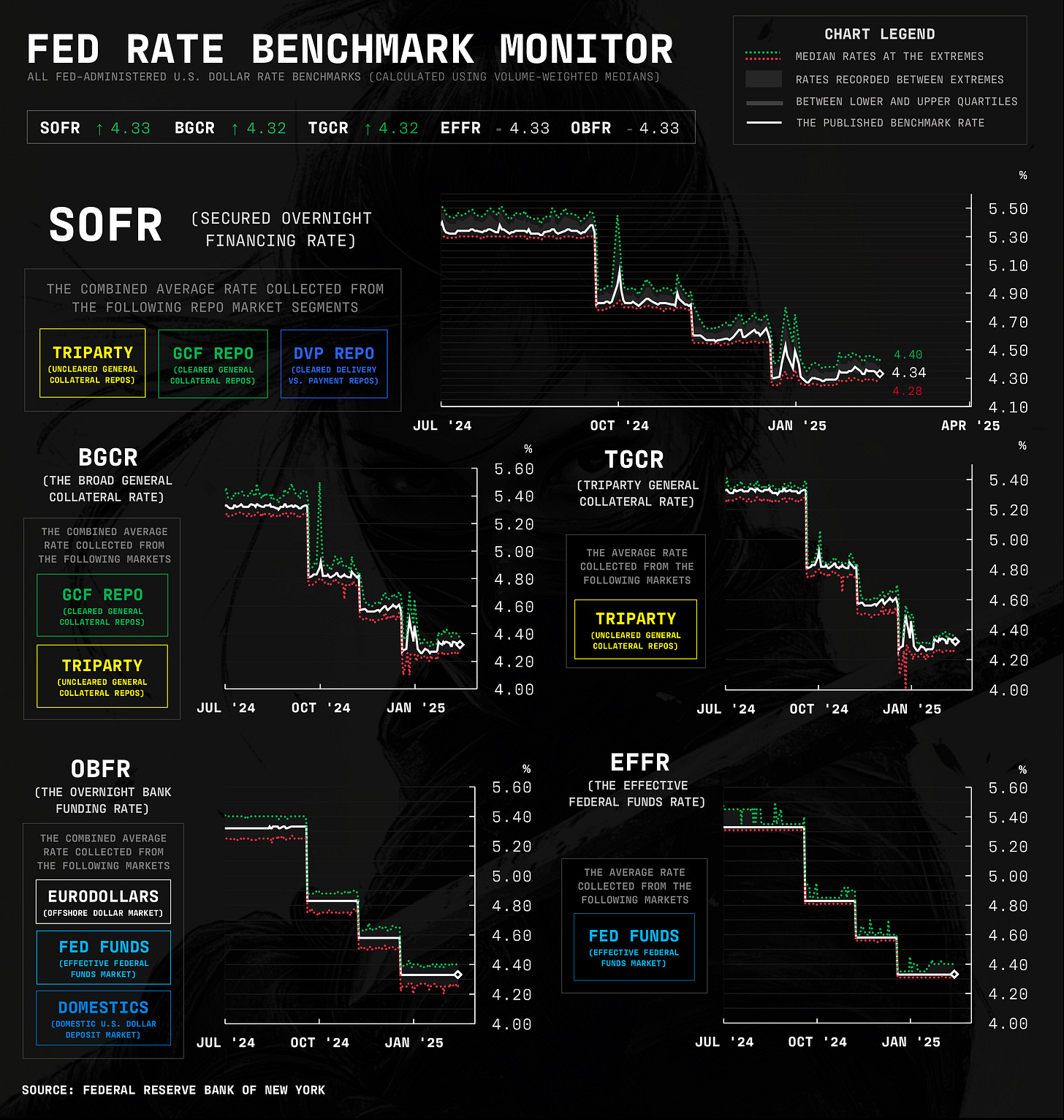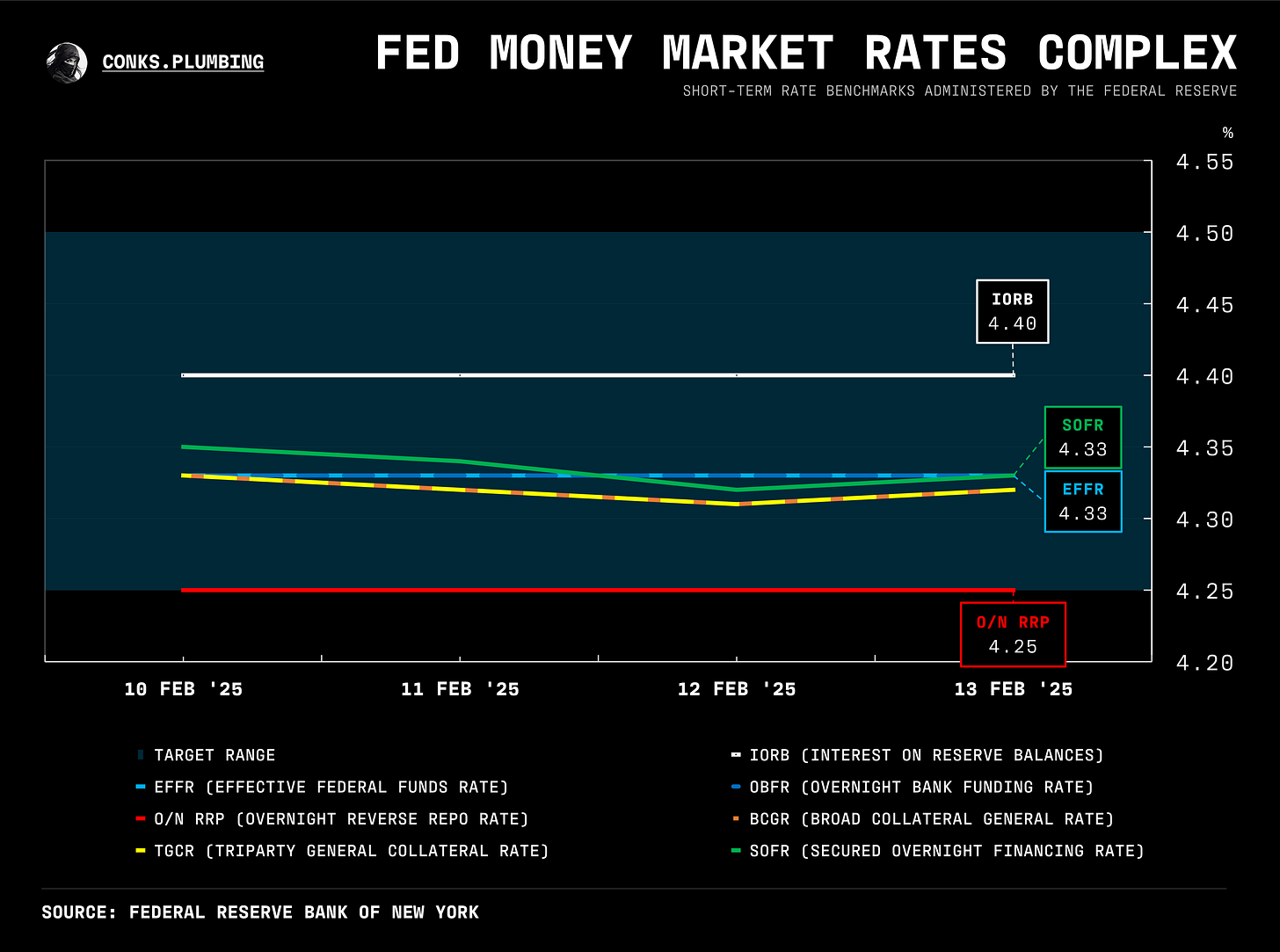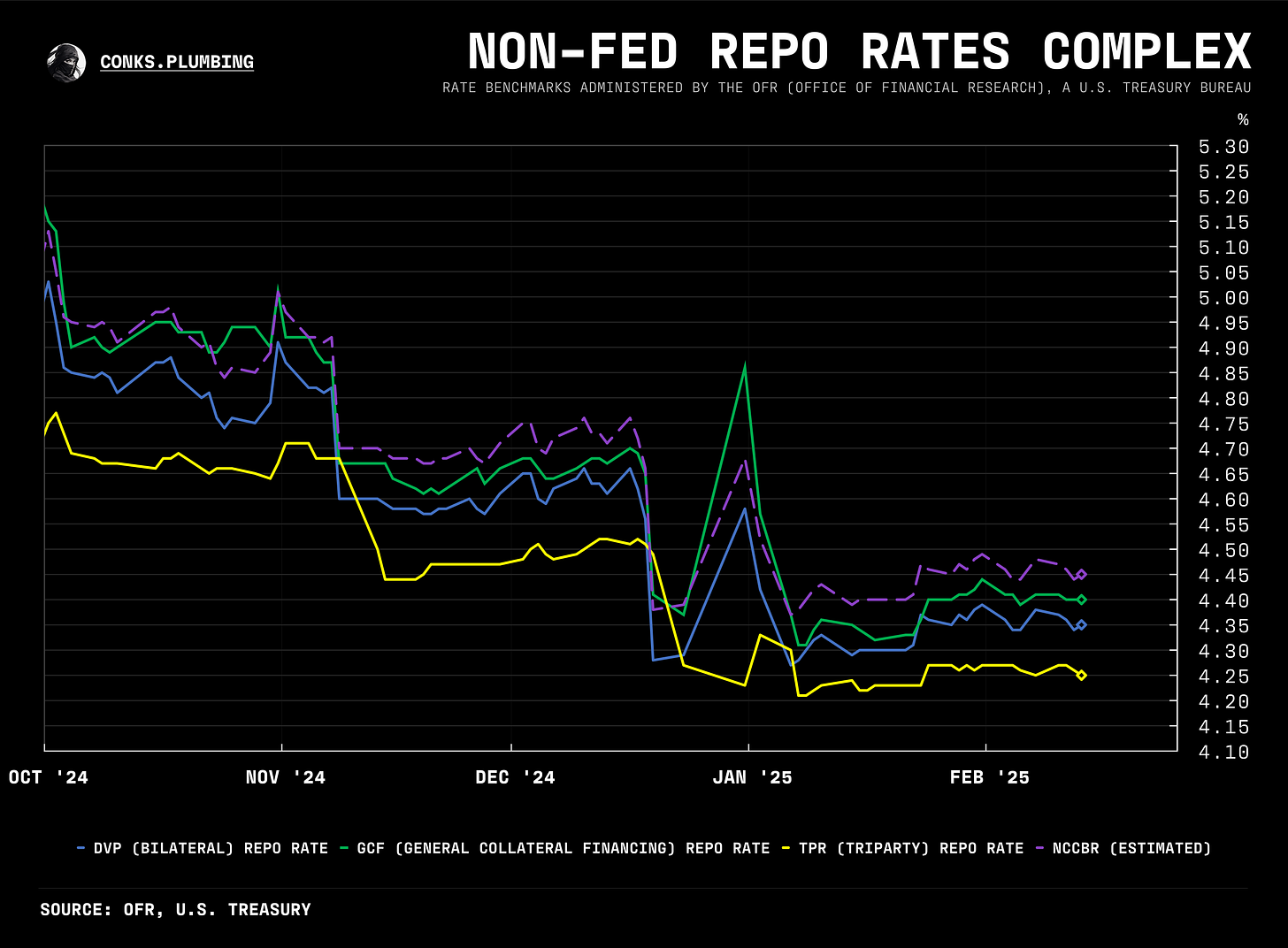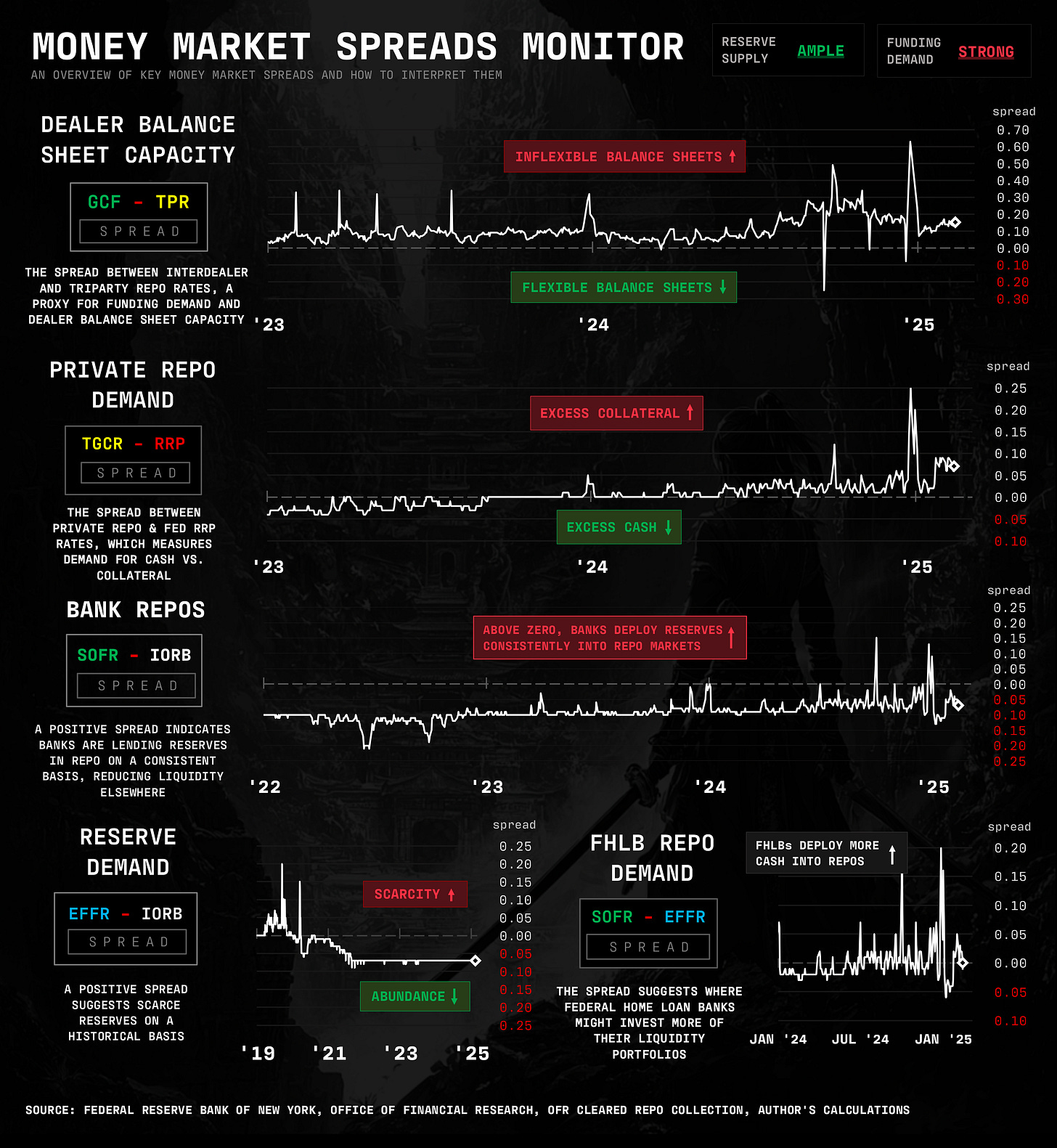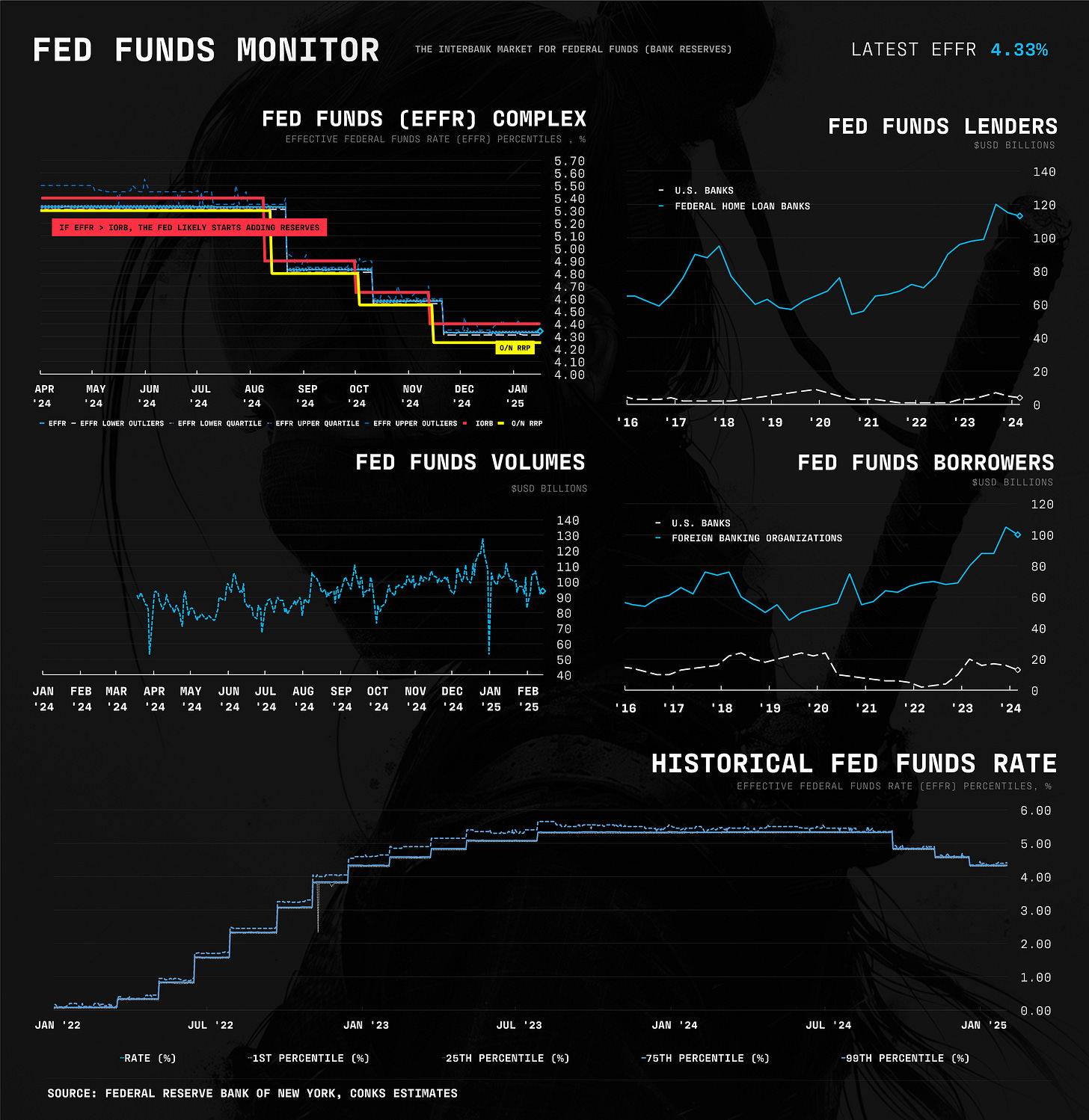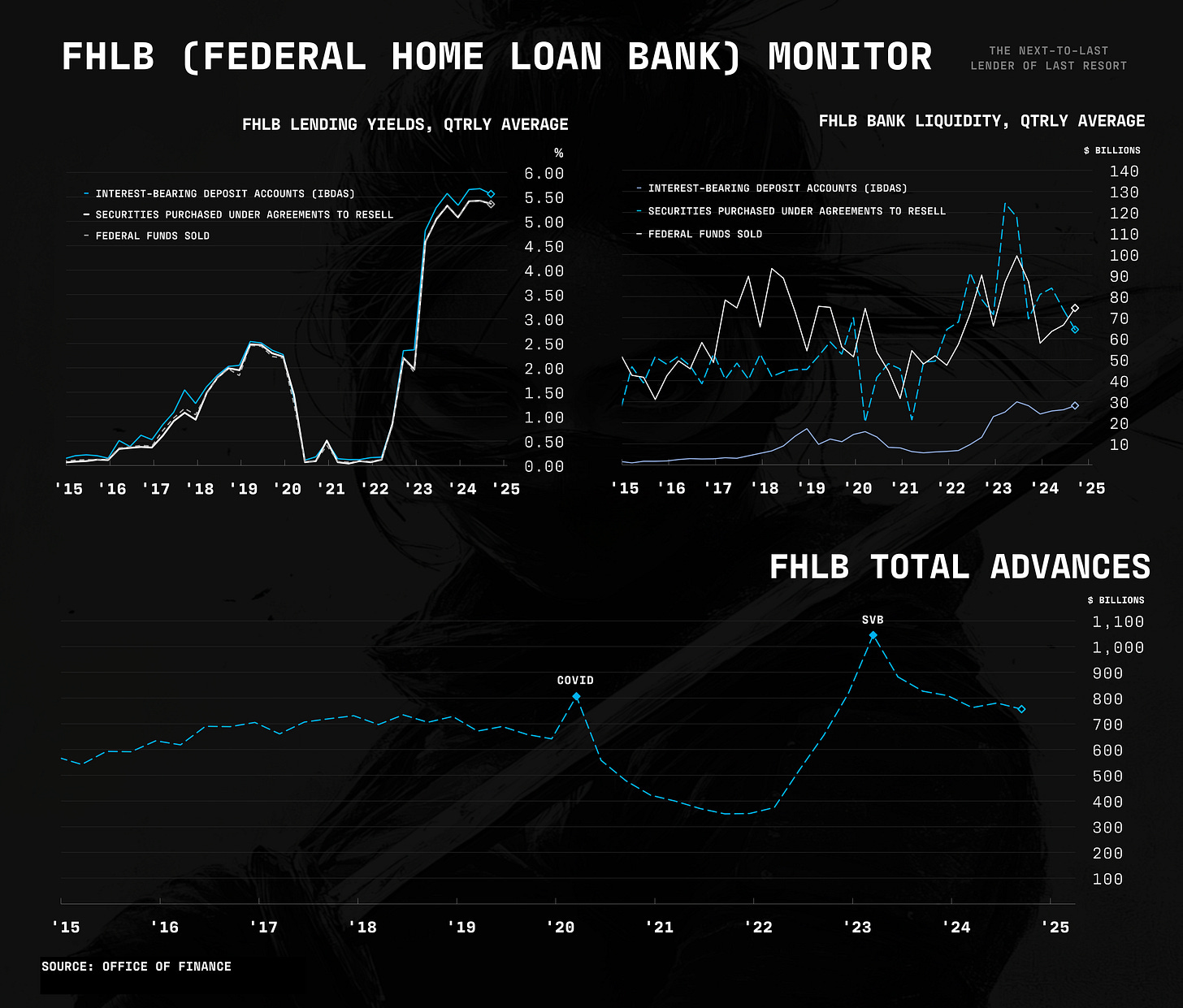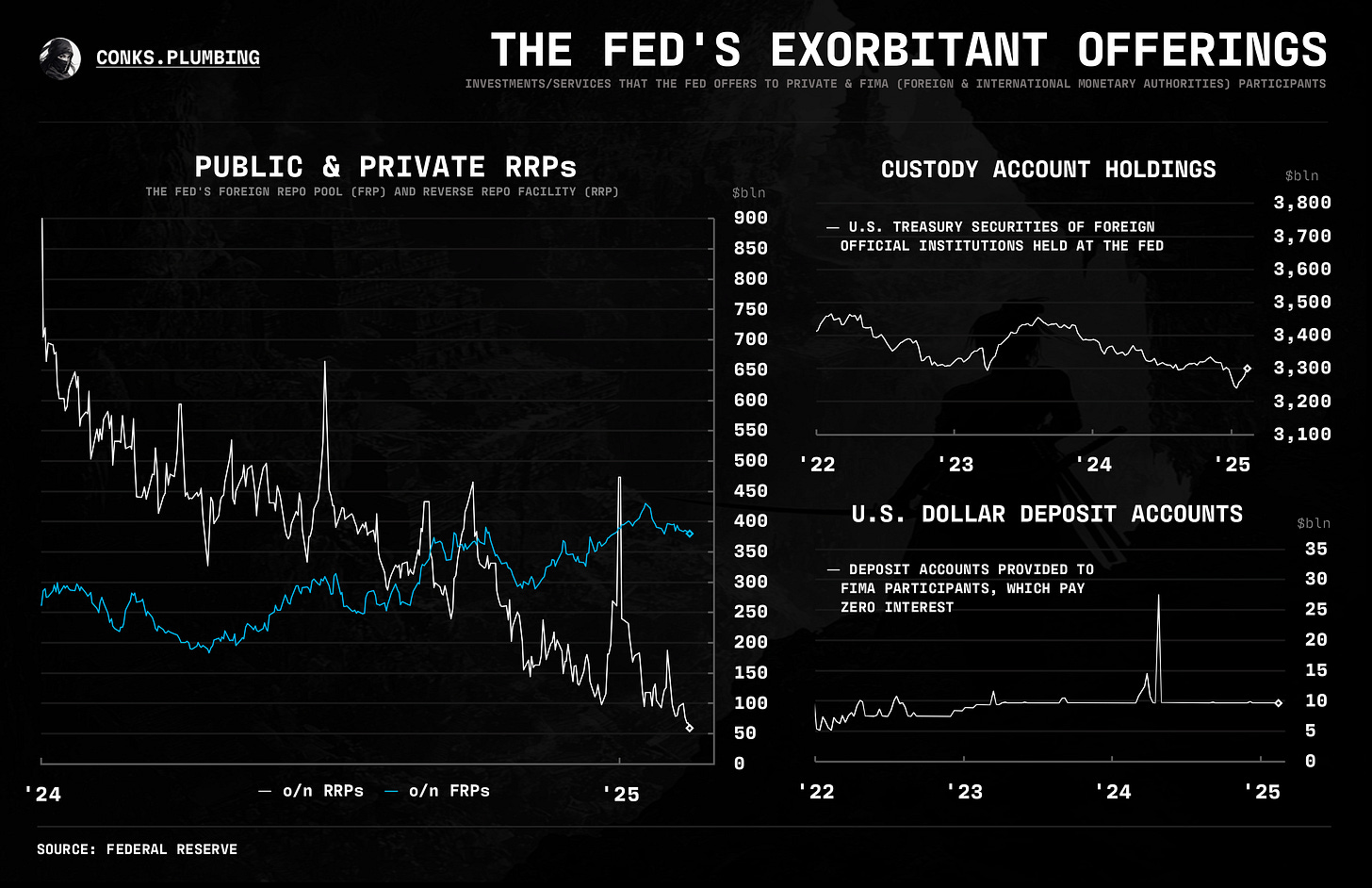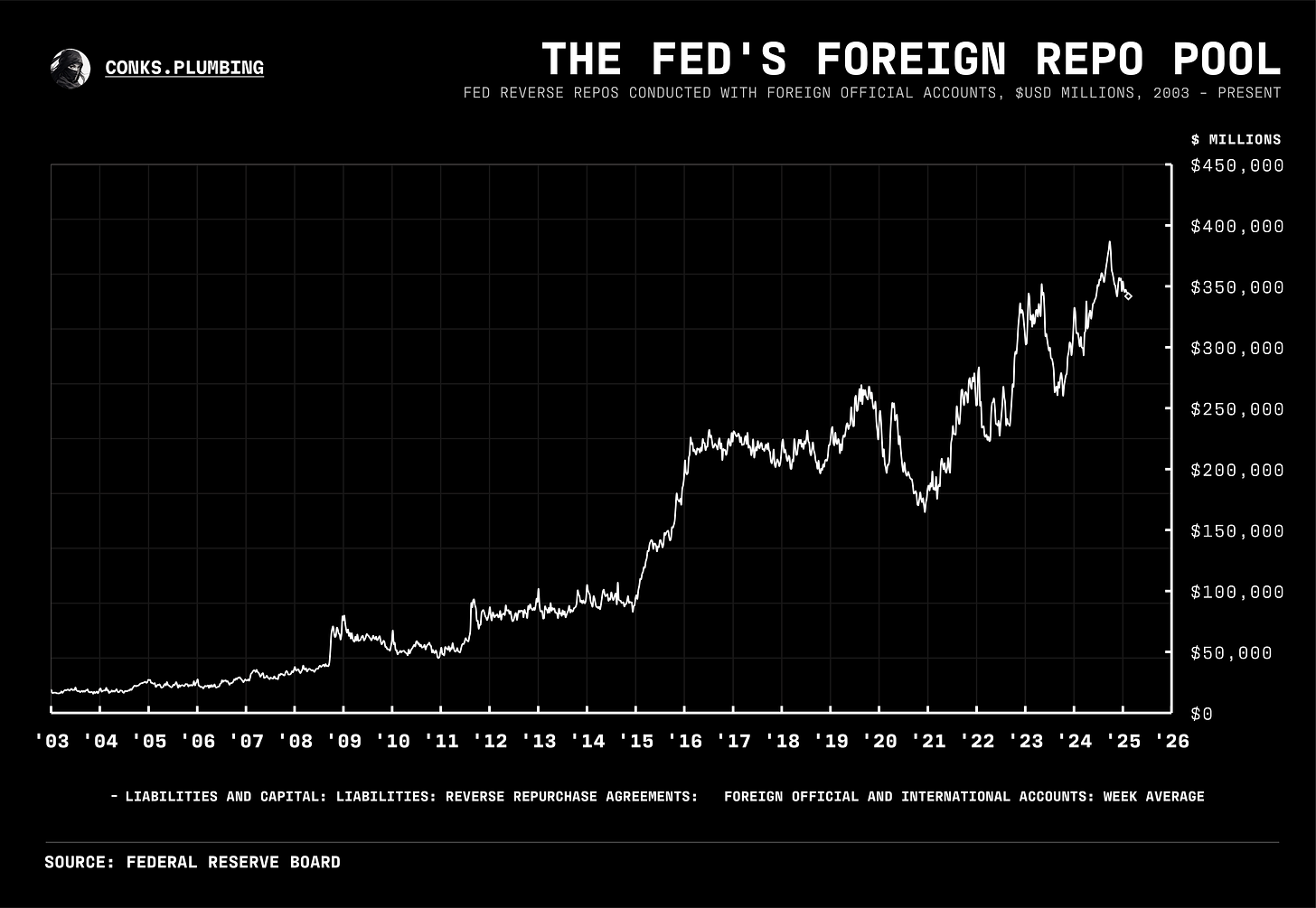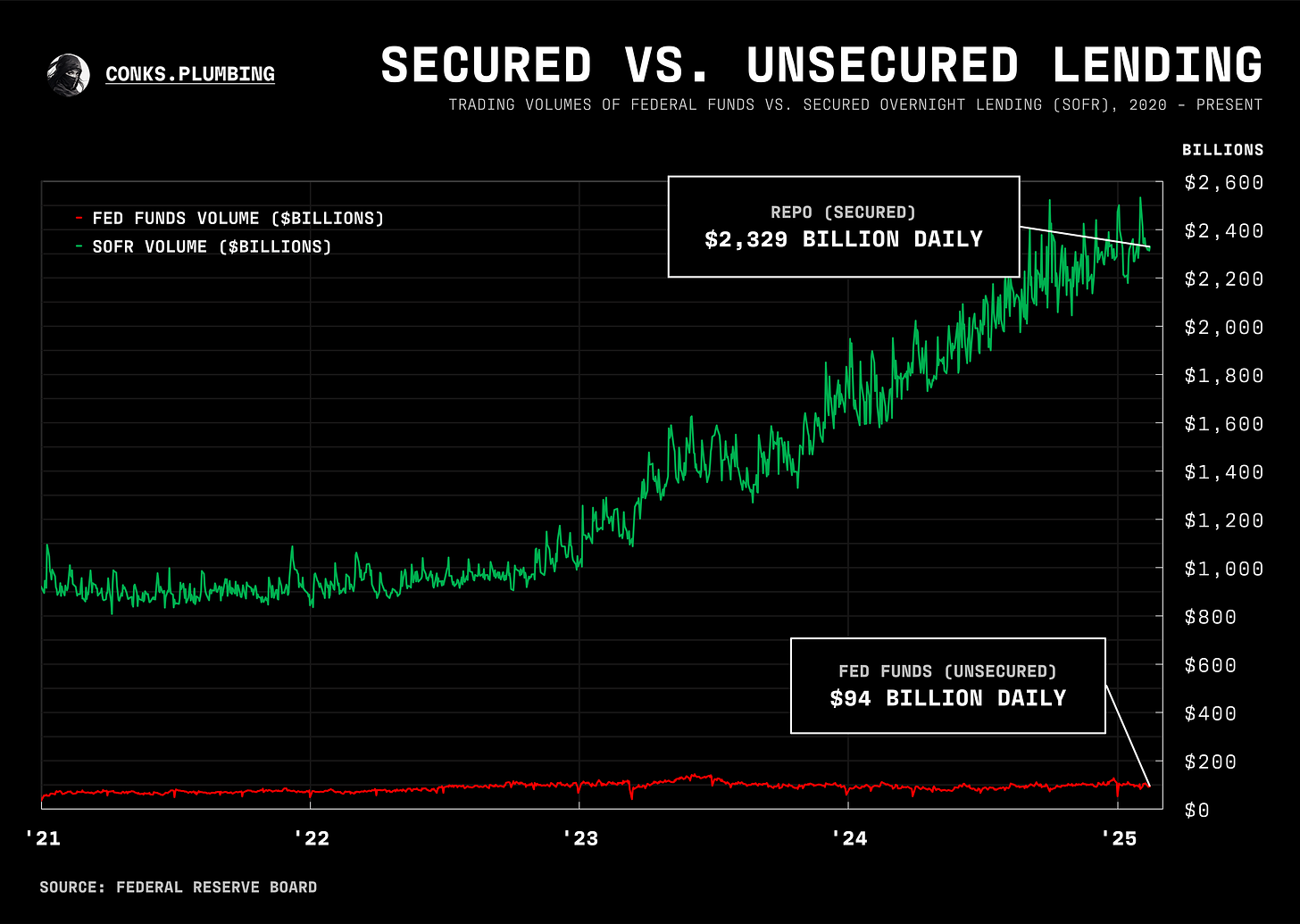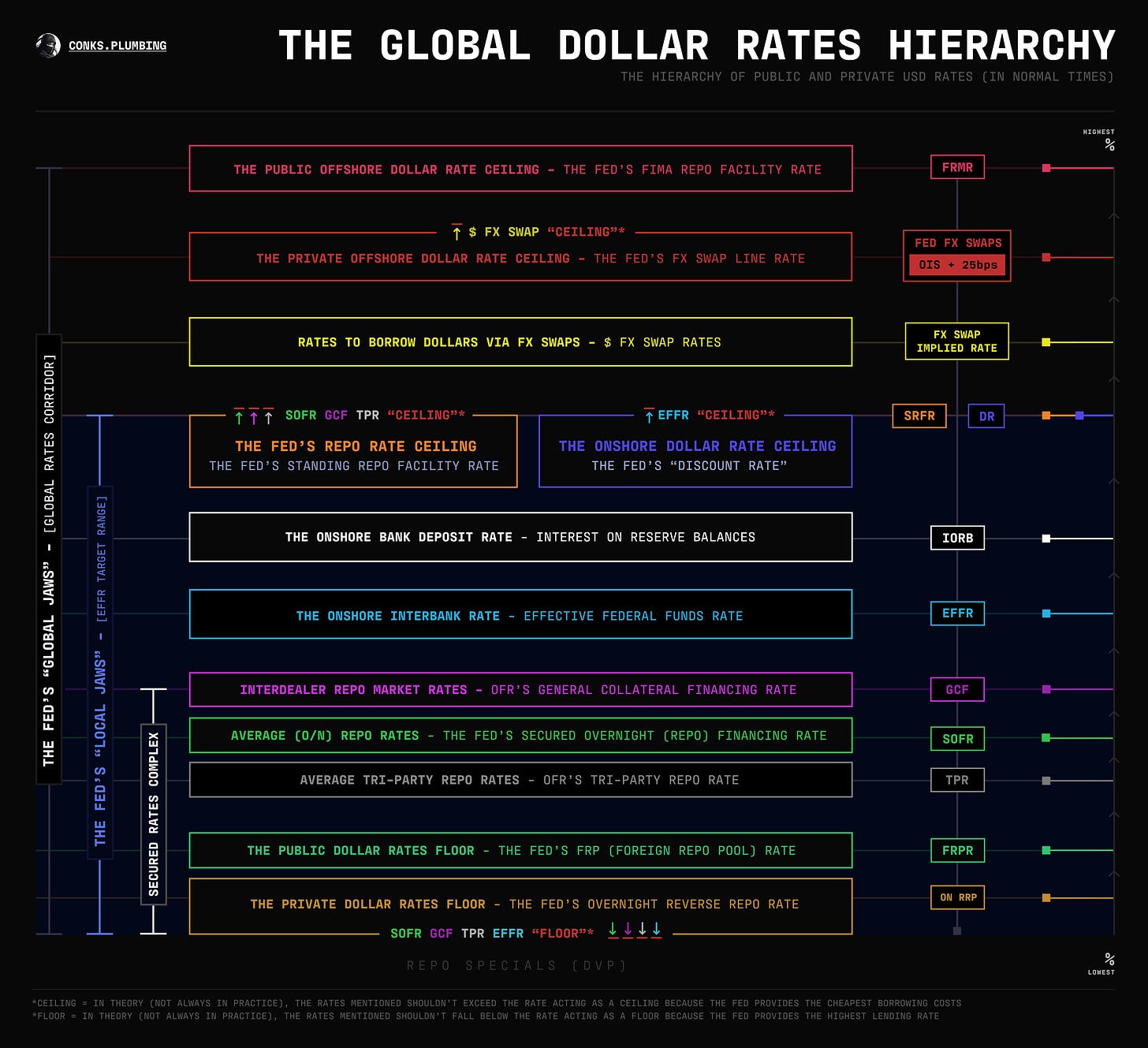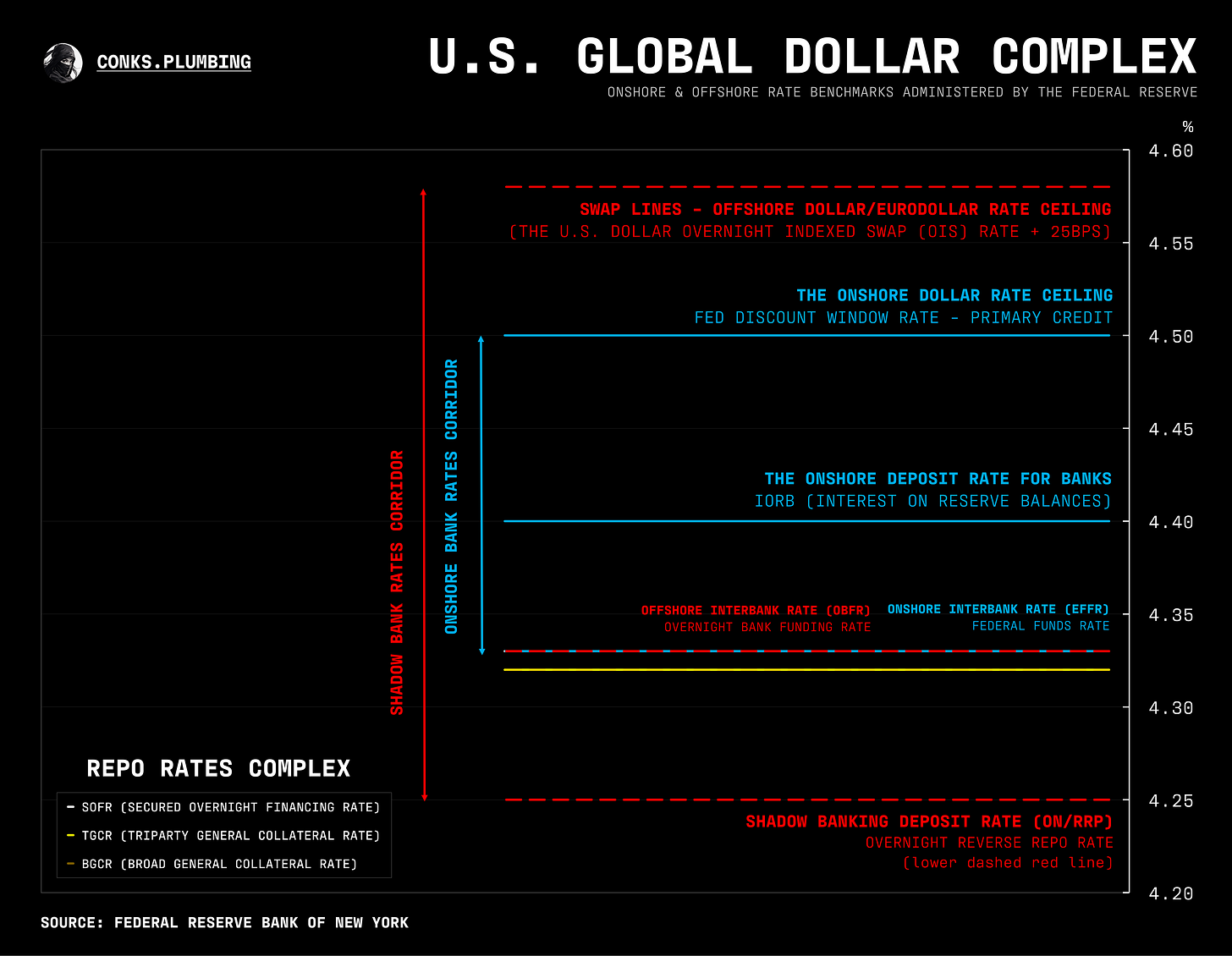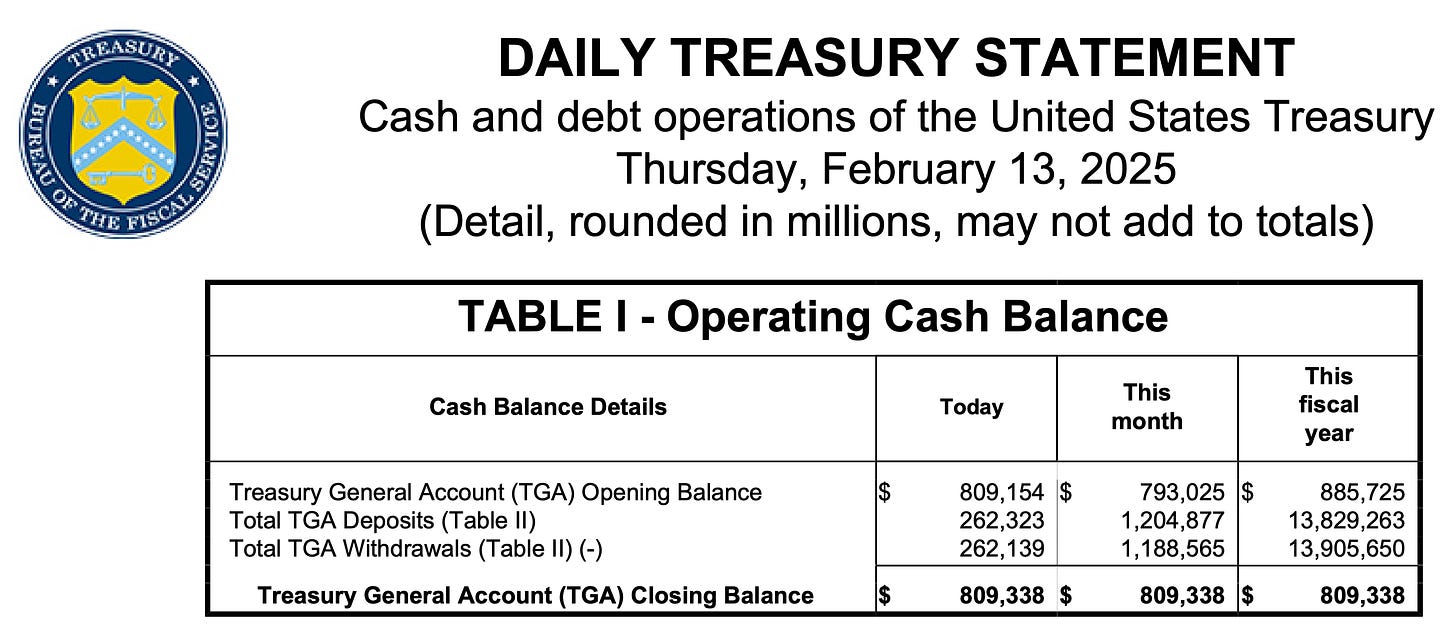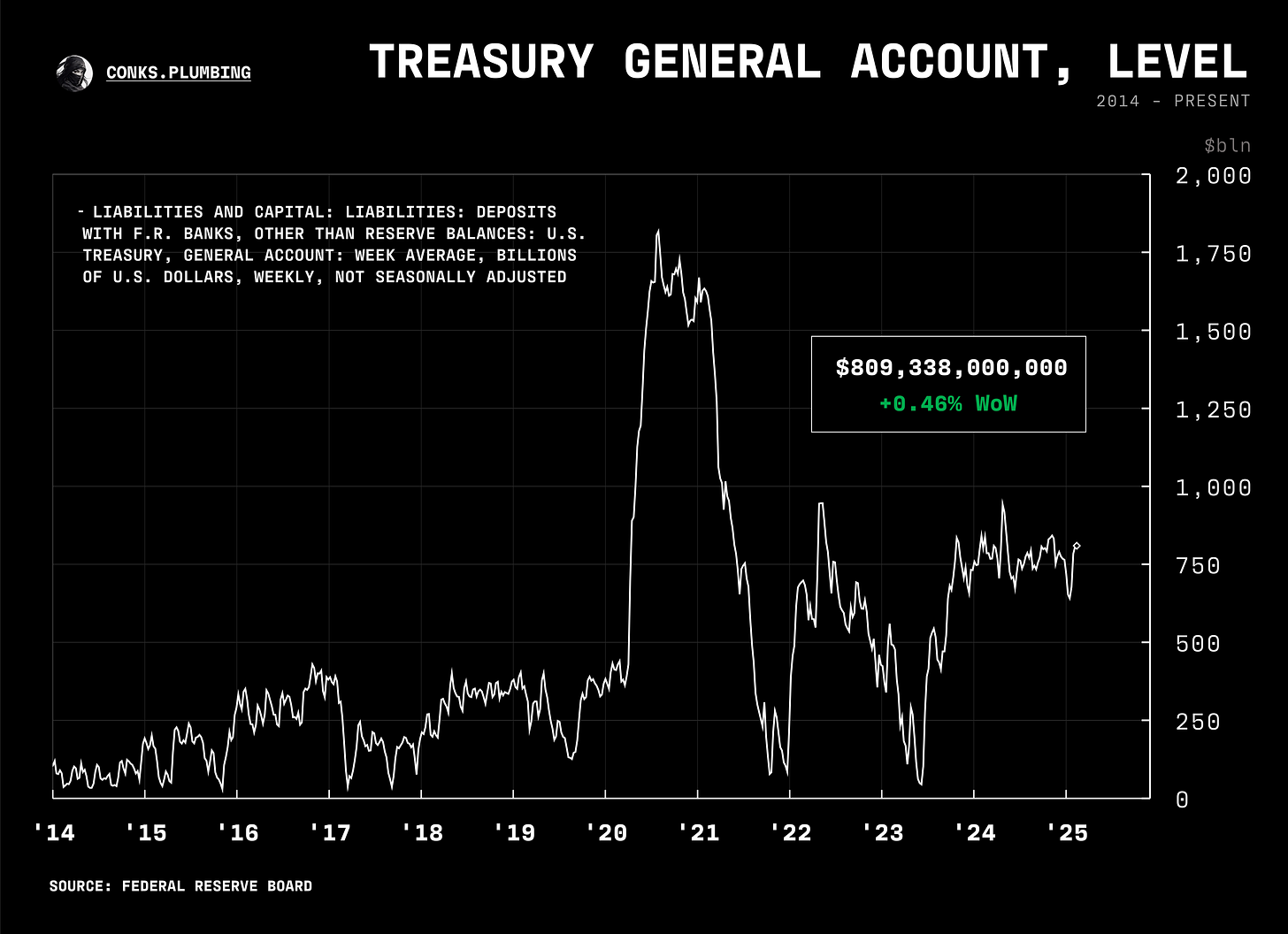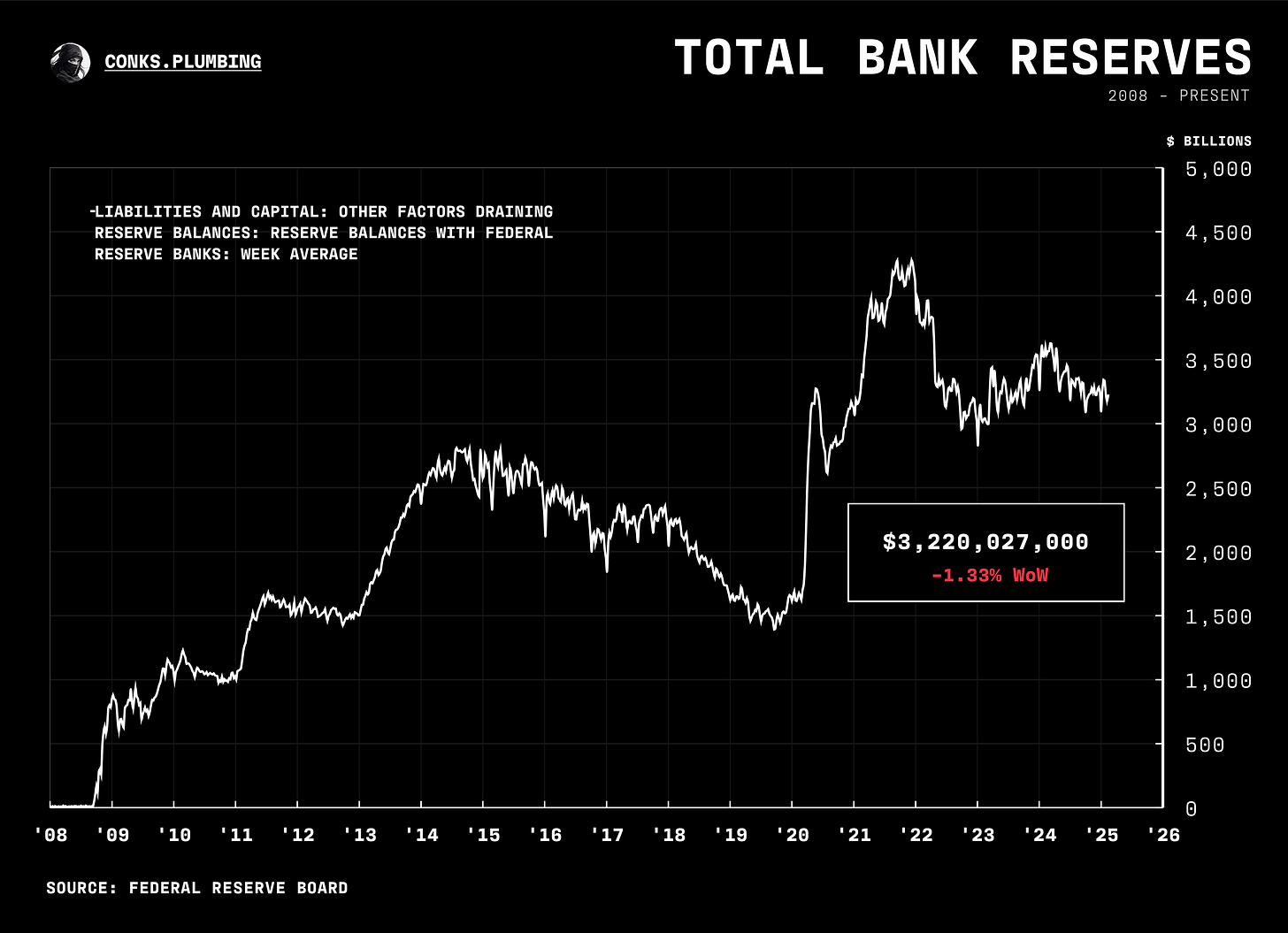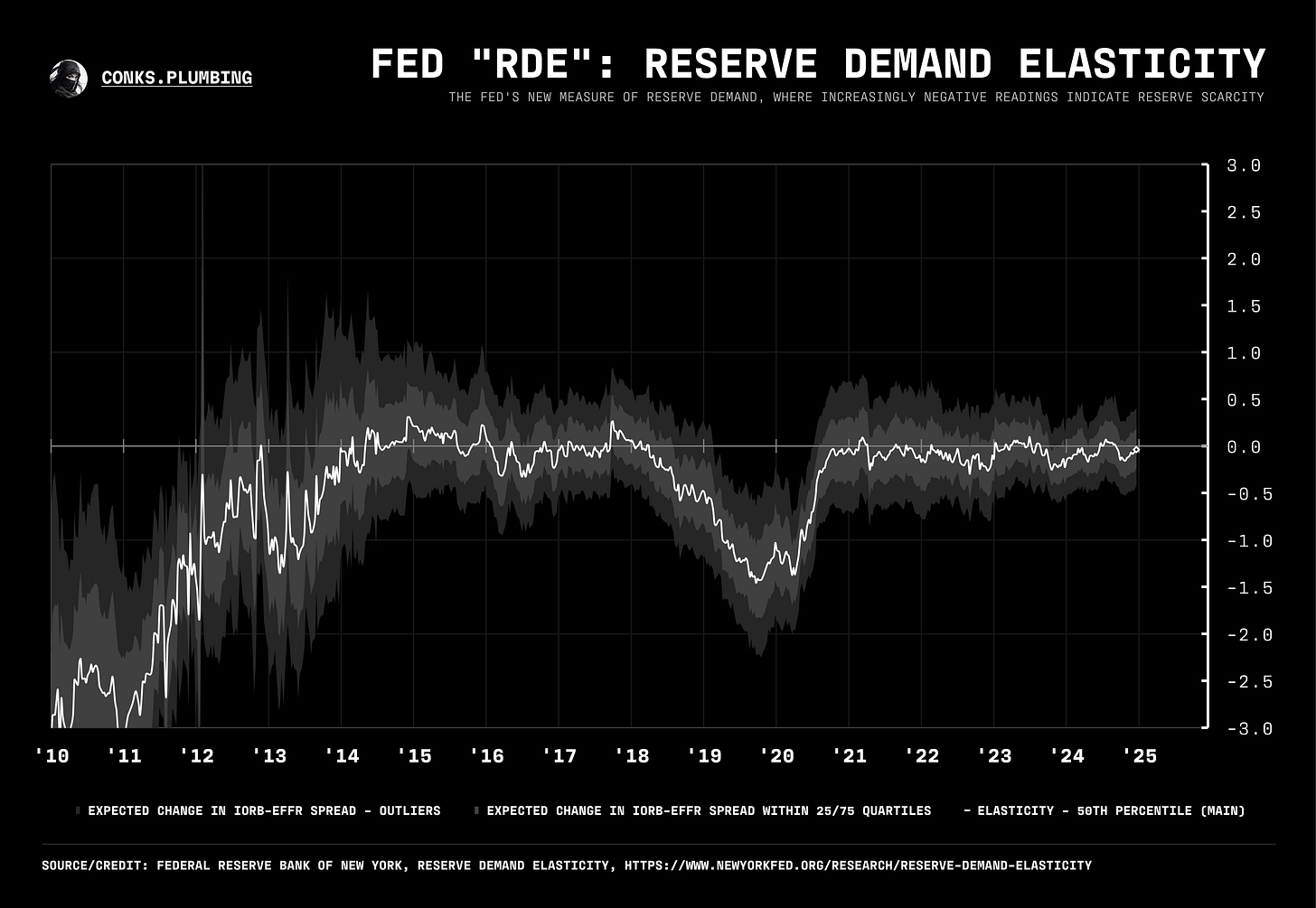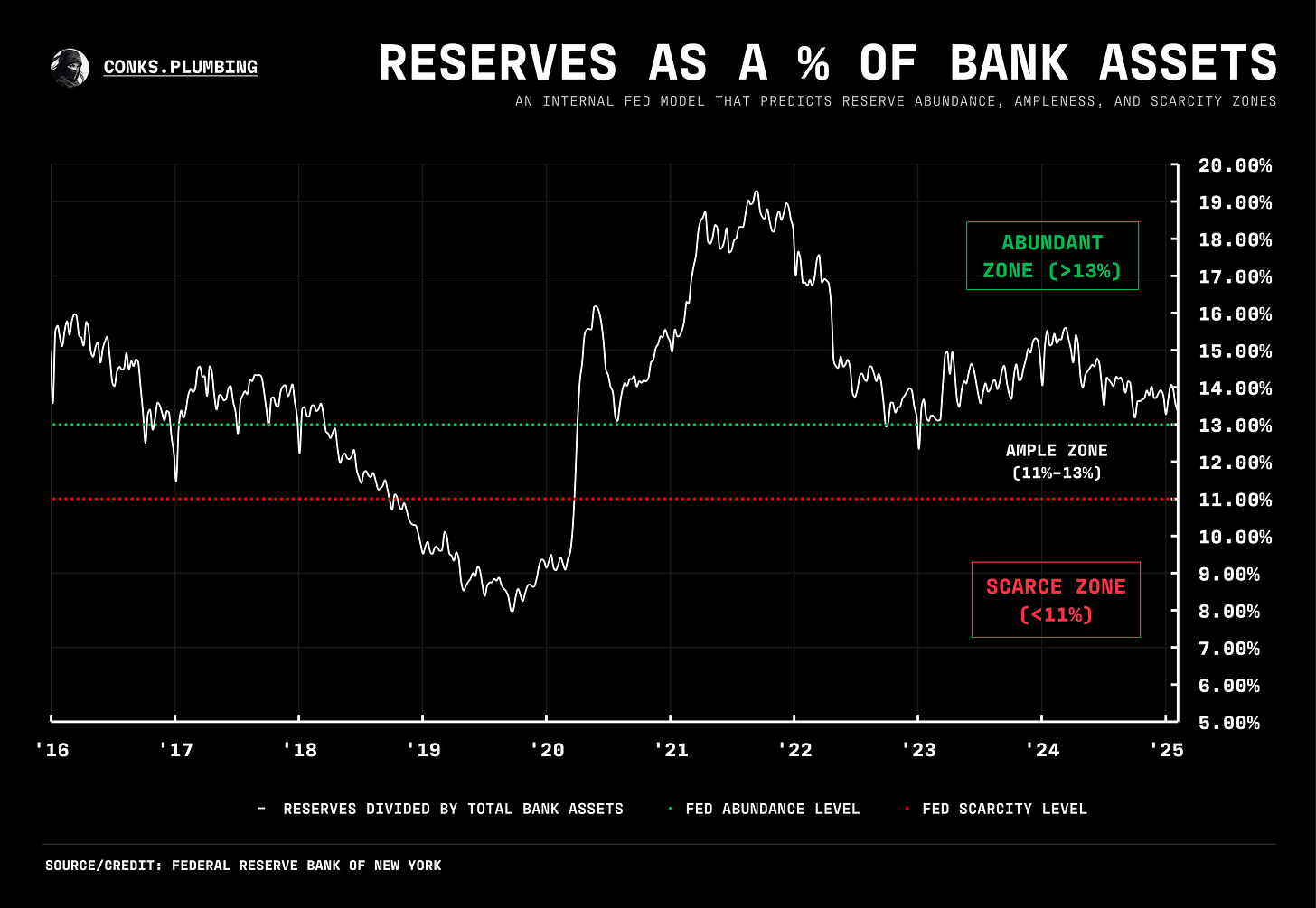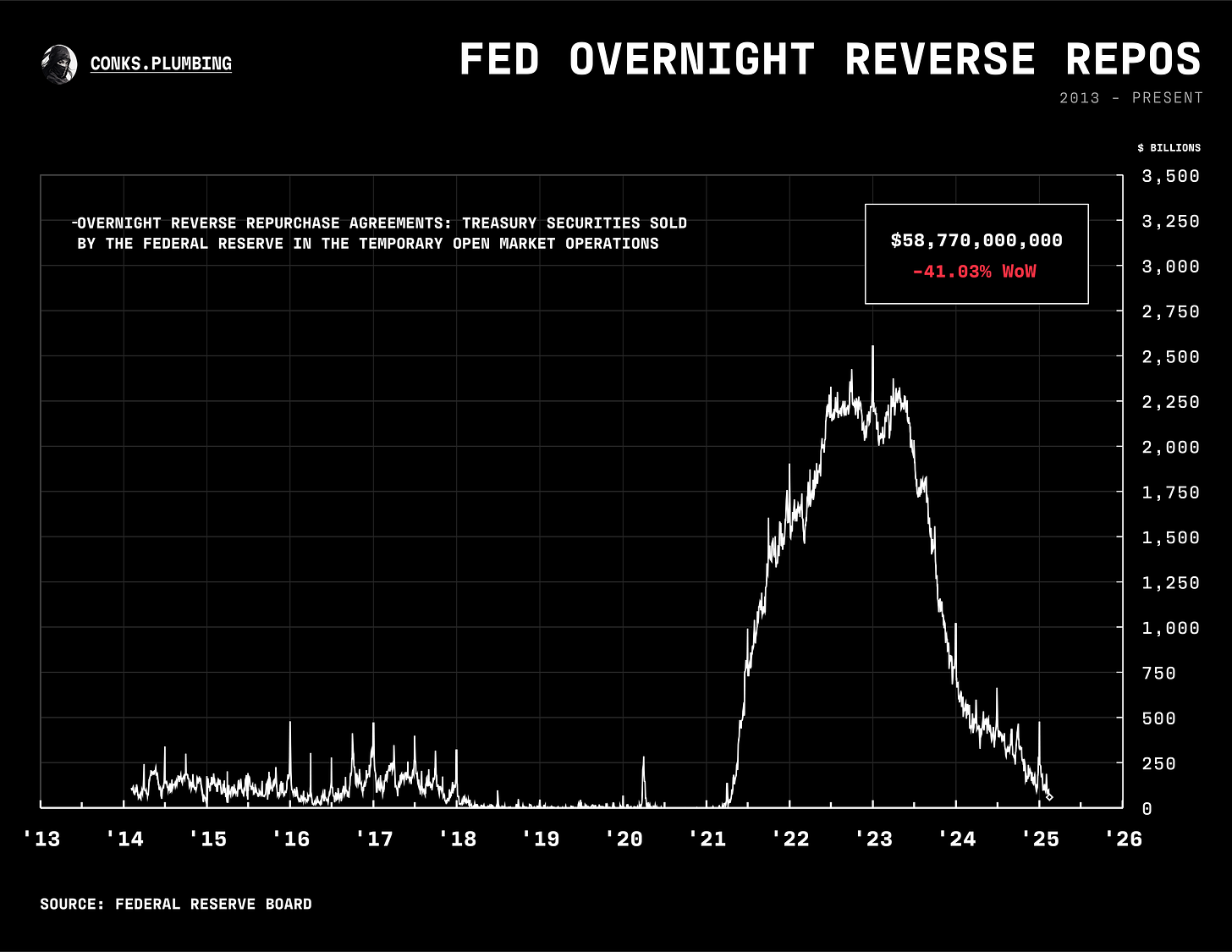Money Market Update
as a tariff war fails to bring down risk assets, word of deregulation around U.S. Treasuries has driven markets to price in more efficient plumbing
Welcome to another Conks edition. We’re now 46,000+ strong. In case you missed it, the concluding part of the Money Market Blindspot went live recently.
In the next series, we’ll demystify the mechanics of a potential future easing in plumbing constraints (a slight hint below) and how this will affect flows and liquidity in U.S. money markets and Treasuries — as well as some related actionable ideas.
But first, a (gradually improving) money market update…
Summary & Brief Commentary
The Fed’s RRP balance is approaching zero, which — despite the incoming TGA drawdown — has prompted numerous calls (on Financial Twitter, at least) for imminent financial doom. However, this only indicates that all spare cash has been invested in non-Fed assets, where dollar deposits have found a home outside the Fed’s facility (such as in t-bills). If the RRP does empty, repo trades will occur solely between private market participants. Zero Fed RRPs will thus help activate the next level of the repo hierarchy, where banks deploy more reserves into repo markets, earning a higher return than what the Fed pays on cash in their Fed accounts overnight — namely IORB.
Only when the RRP hits zero and banks’ reserve balances become too scarce will an illiquidity event possibly emerge — say, a money market “blindspot”. As mentioned in the last piece, the street (on average) expects the Fed to halt QT in Q2 this year, while dealers predict the Fed will wait much longer, Q1 2026 or later, to increase reserve balances.
Meanwhile, at its February refunding (a.k.a the QRA), the Treasury decided not to boost duration issuance dramatically — while also maintaining the same TGA target level, a topic highlighted in the last update. According to the CIA (that is, the Conks Intelligence Agency), those advising Bessent who wanted to unwind Yellen’s legacy — by supplying more duration to the market — weren’t present to influence his decision-making. Moreover, primary dealers and the Street had expected coupon issuance to remain stable.
In broader markets, which have moved somewhat sideways, our macro outlook remains untouched. Amidst a volatile geopolitical landscape, we expect risk assets to continue to perform well, better than bonds, with Trump-induced headlines remaining a sideshow.
In STIRs, futures markets have continued to defer rate cuts. Longer-term plays, such as the SOFR Z5Z6 flattener (viewable via SFRZ5Z6 on Bloomberg or CME:SR3Z2025-CME:SR3Z2026 on TradingView), have worked well. As for the SOFR-FF basis, overlooking looser money market conditions from a TGA drawdown continues to work. The SOFR-FF (SR1-ZQ) futures basis in the coming months has tightened (i.e. pricing in tighter funding conditions) while also pricing in tighter conditions post the consensus resolution date of the latest debt limit battle.
Lastly, we’ve seen an extensive widening in swap spreads (i.e. Treasuries outperforming swaps) after multiple deregulatory catalysts have unfolded. This was not only driven by an expected TGA cash flood and the Fed’s Barr stepping down but also by further comments from Fed Chair Powell and the Fed’s Michelle Bowman — Barr’s likely replacement — on excluding Treasuries from the SLR (Supplementary Leverage Ratio). More on the mechanics of the SLR (and potential ideas around it) is coming up shortly.
And with that, onto the chartbook…
If you act on anything provided in this newsletter, you agree to the terms in this disclaimer. Everything in this newsletter is for educational and entertainment purposes only and NOT investment advice. Nothing in this newsletter is an offer to sell or to buy any security. The author is not responsible for any financial loss you may incur by acting on any information provided in this newsletter. Before making any investment decisions, talk to a financial advisor.
EFFR, OBFR, SOFR, TGCR, and BGCR are subject to the Terms of Use posted at newyorkfed.org. The New York Fed is not responsible for publication of tri-party data from the Bank of New York Mellon (BNYM) or GCF Repo/Delivery-versus-Payment (DVP) repo data via DTCC Solutions LLC (“Solutions”), an affiliate of The Depository Trust & Clearing Corporation, & OFR, does not sanction or endorse any particular republication, and has no liability for your use.







